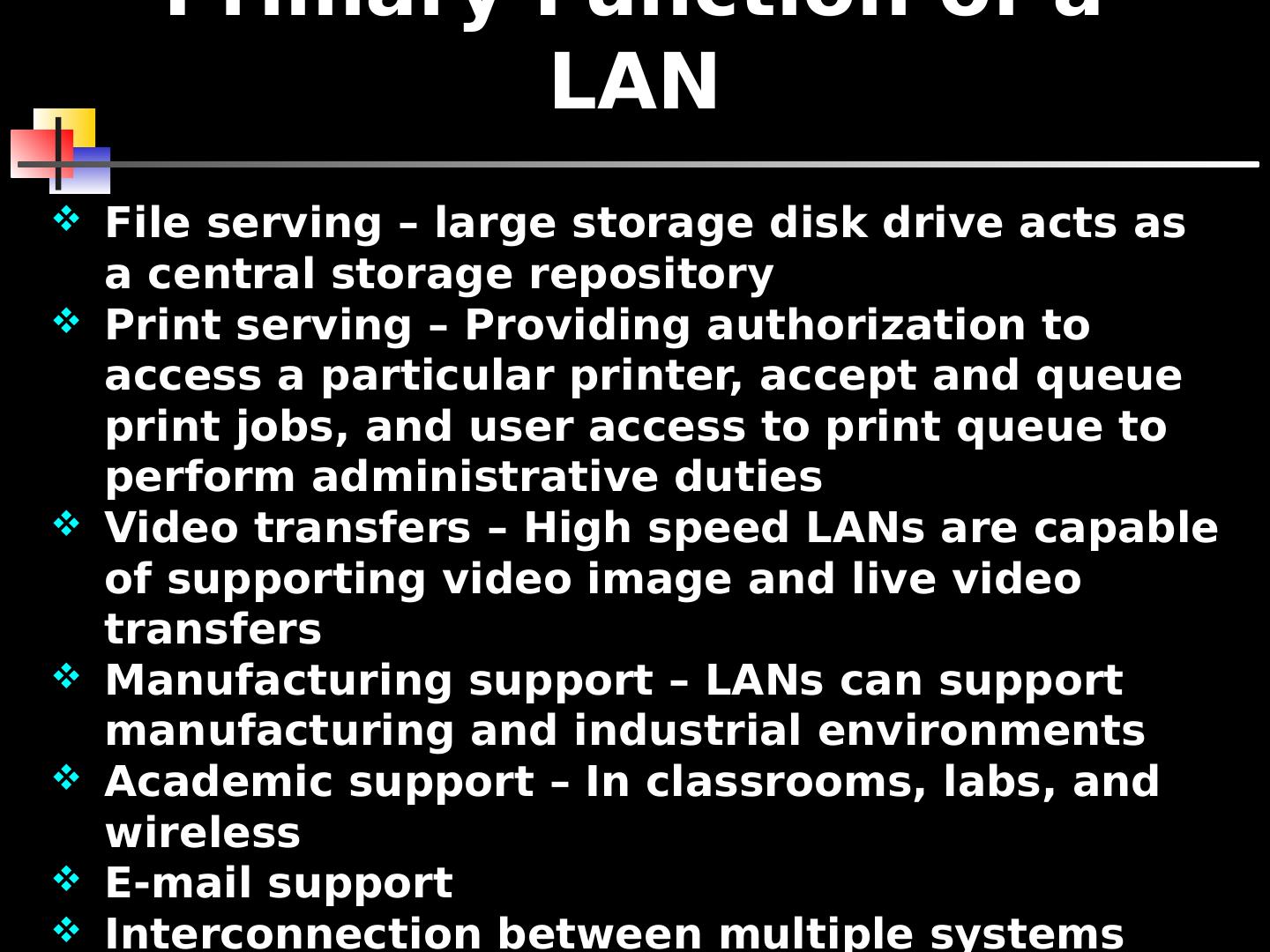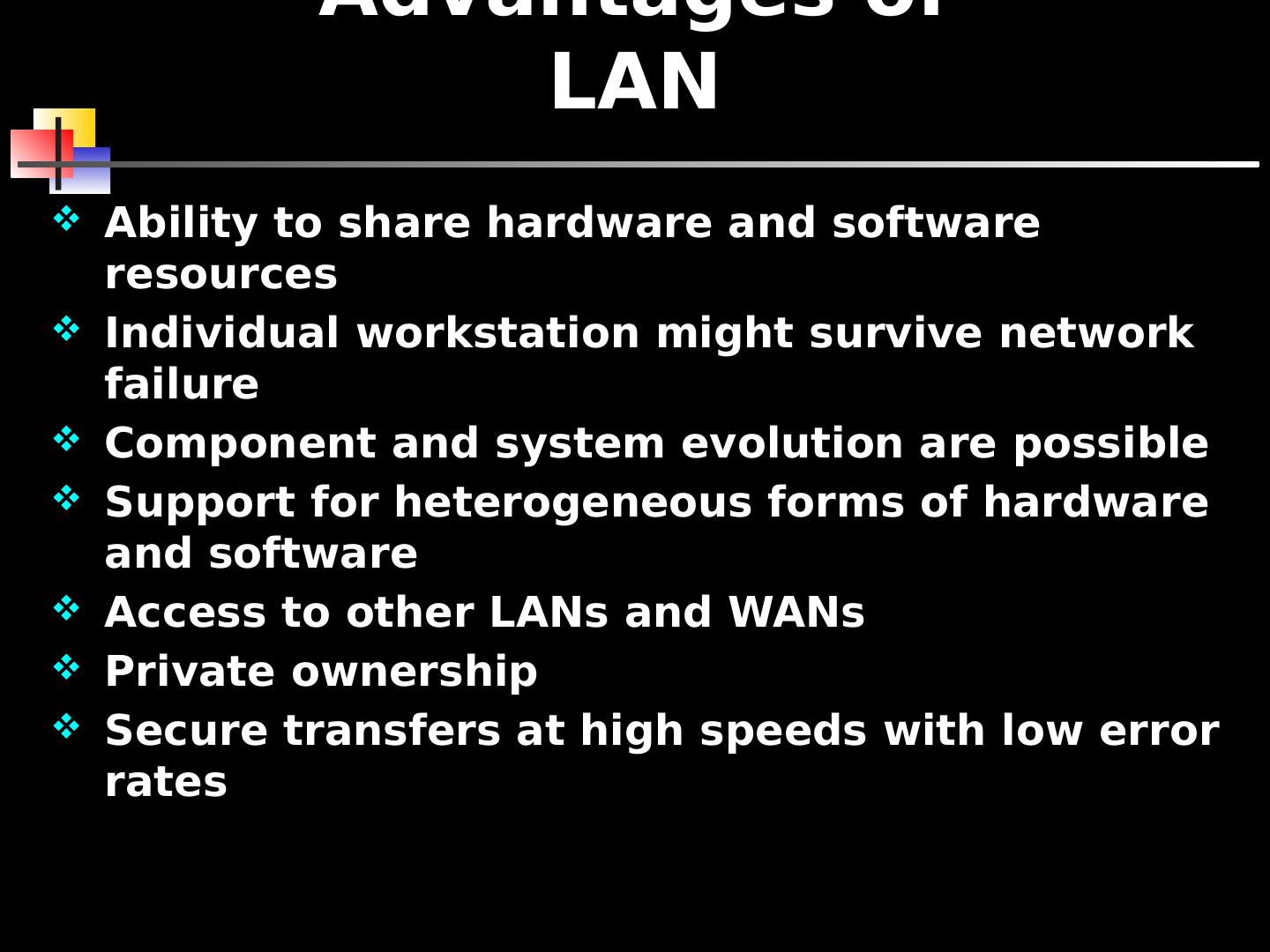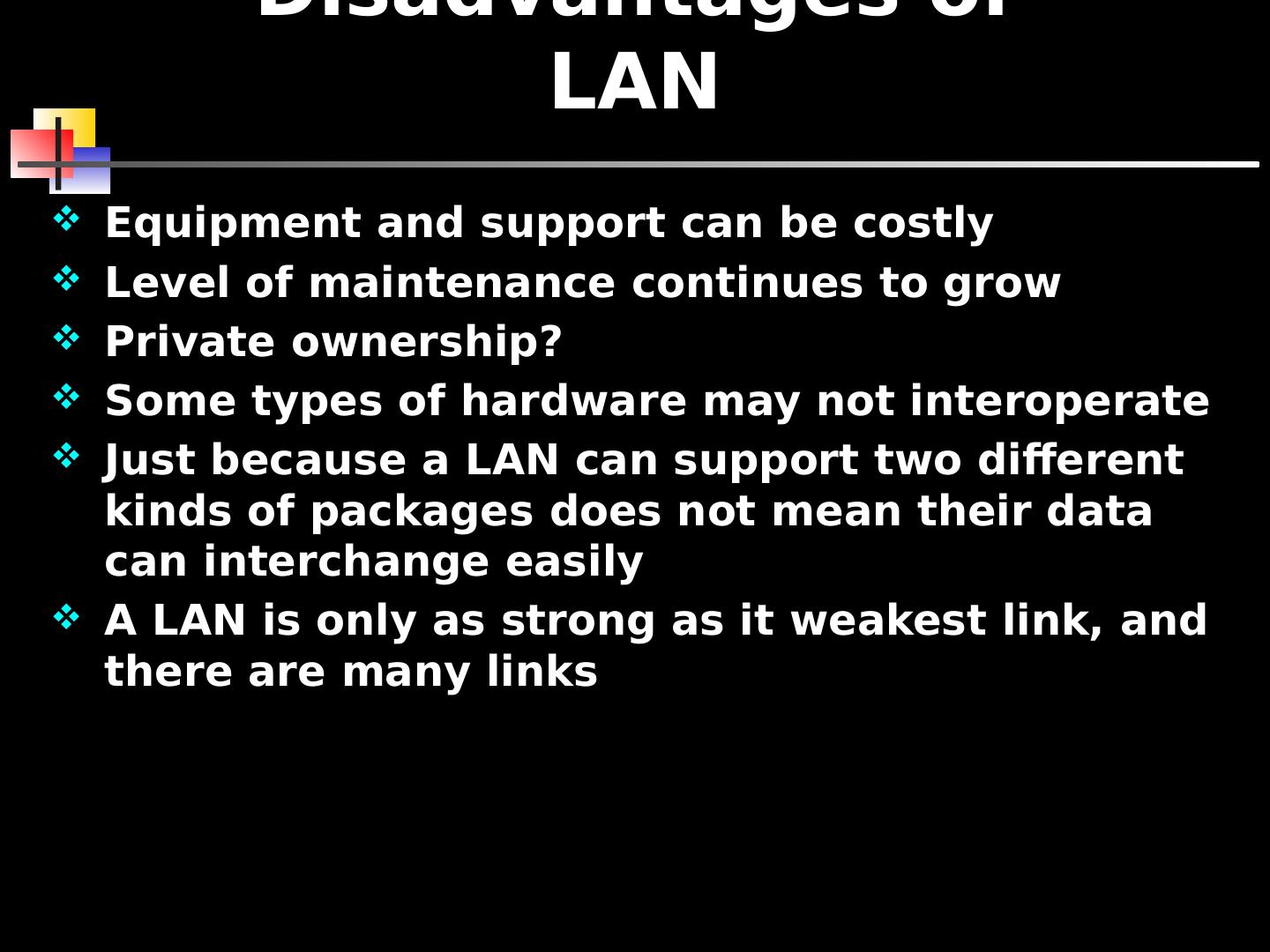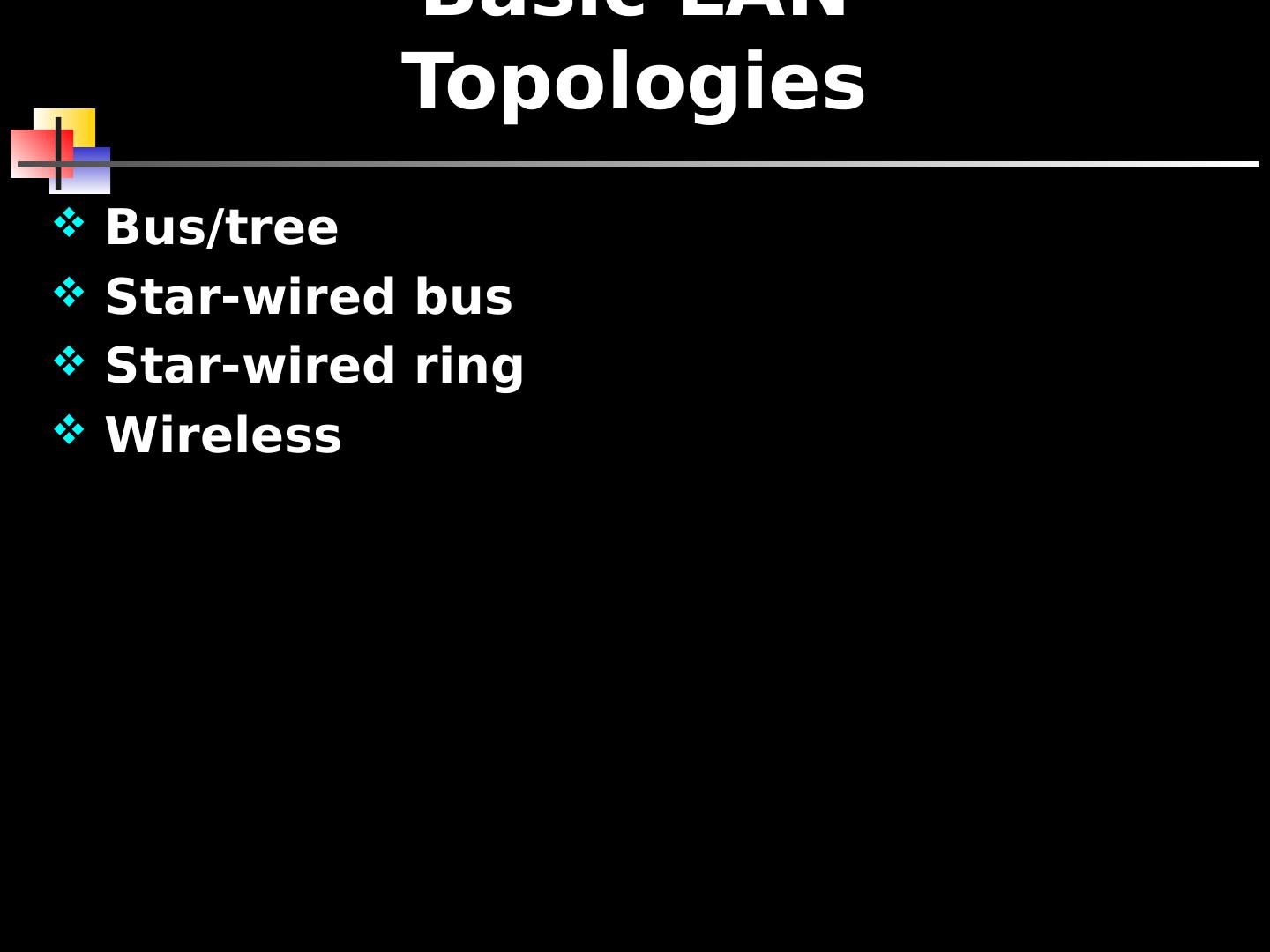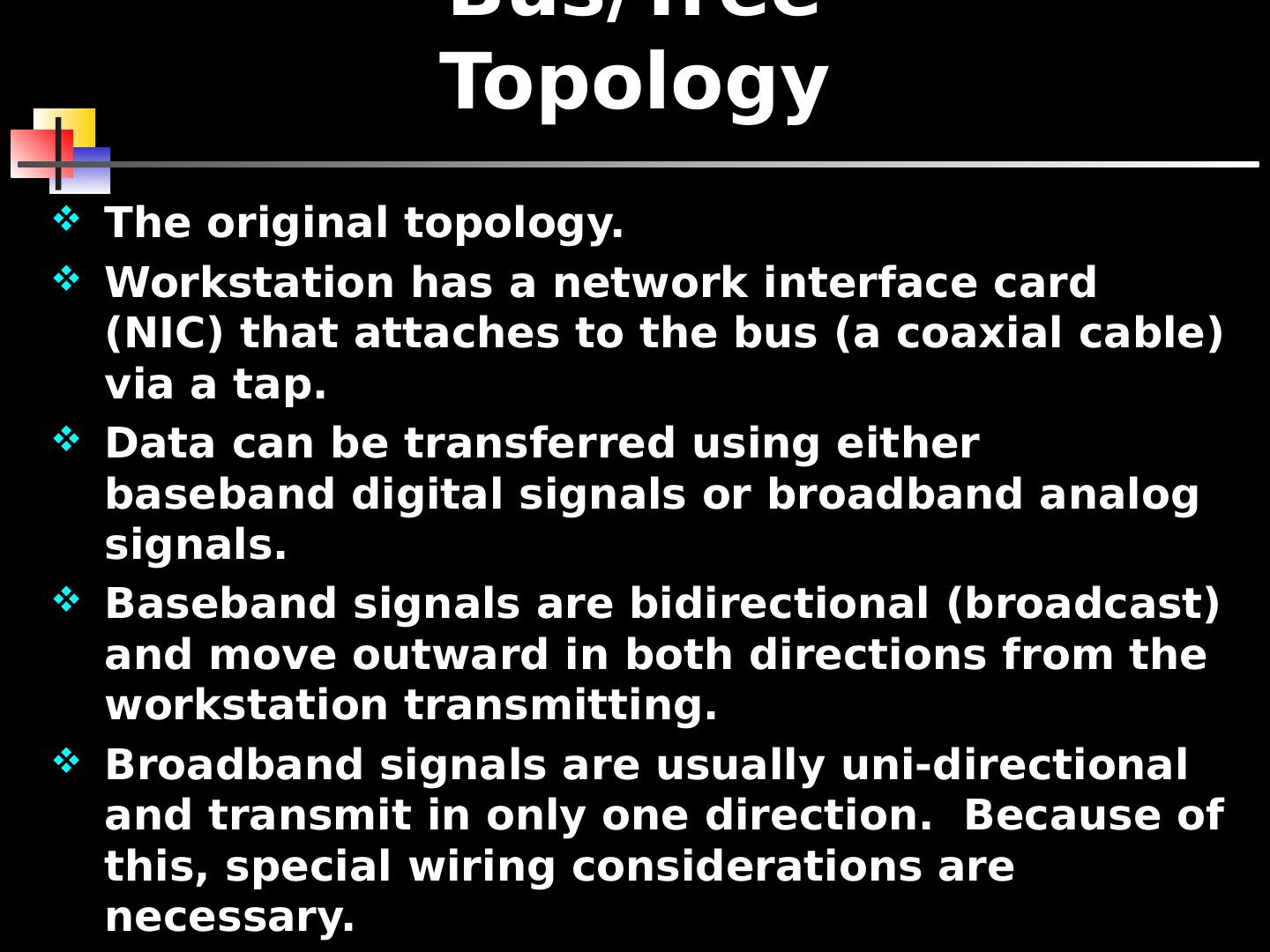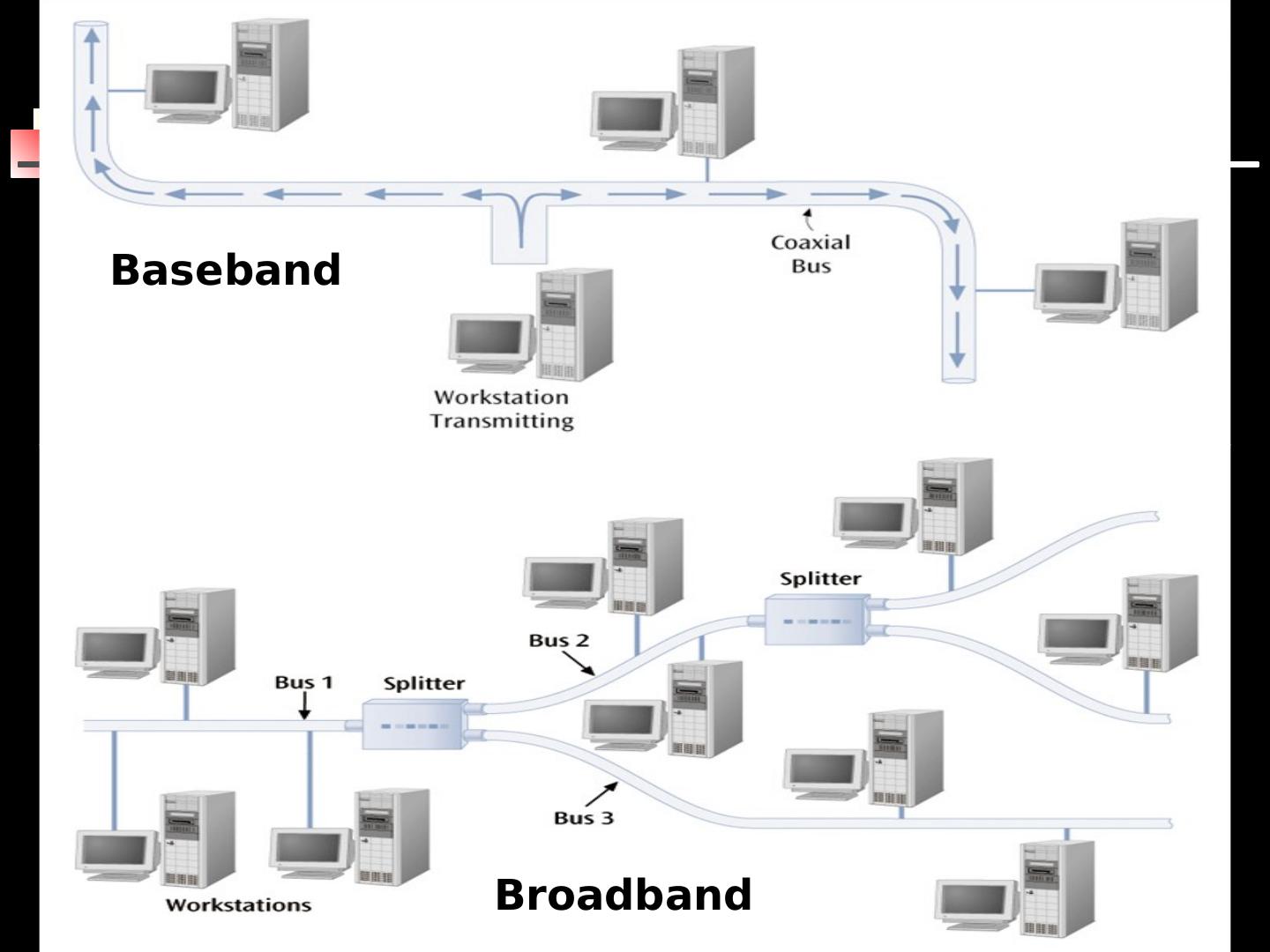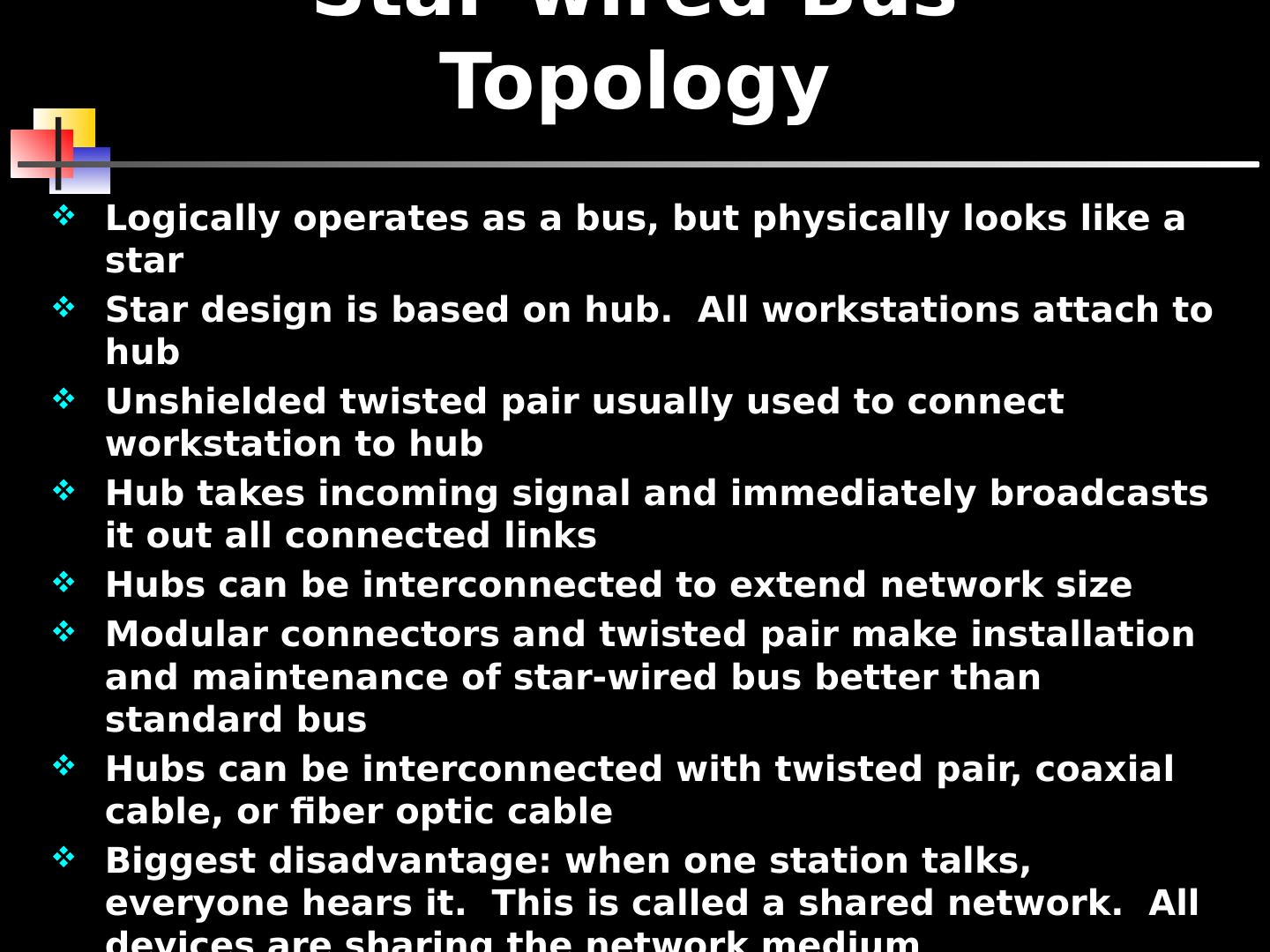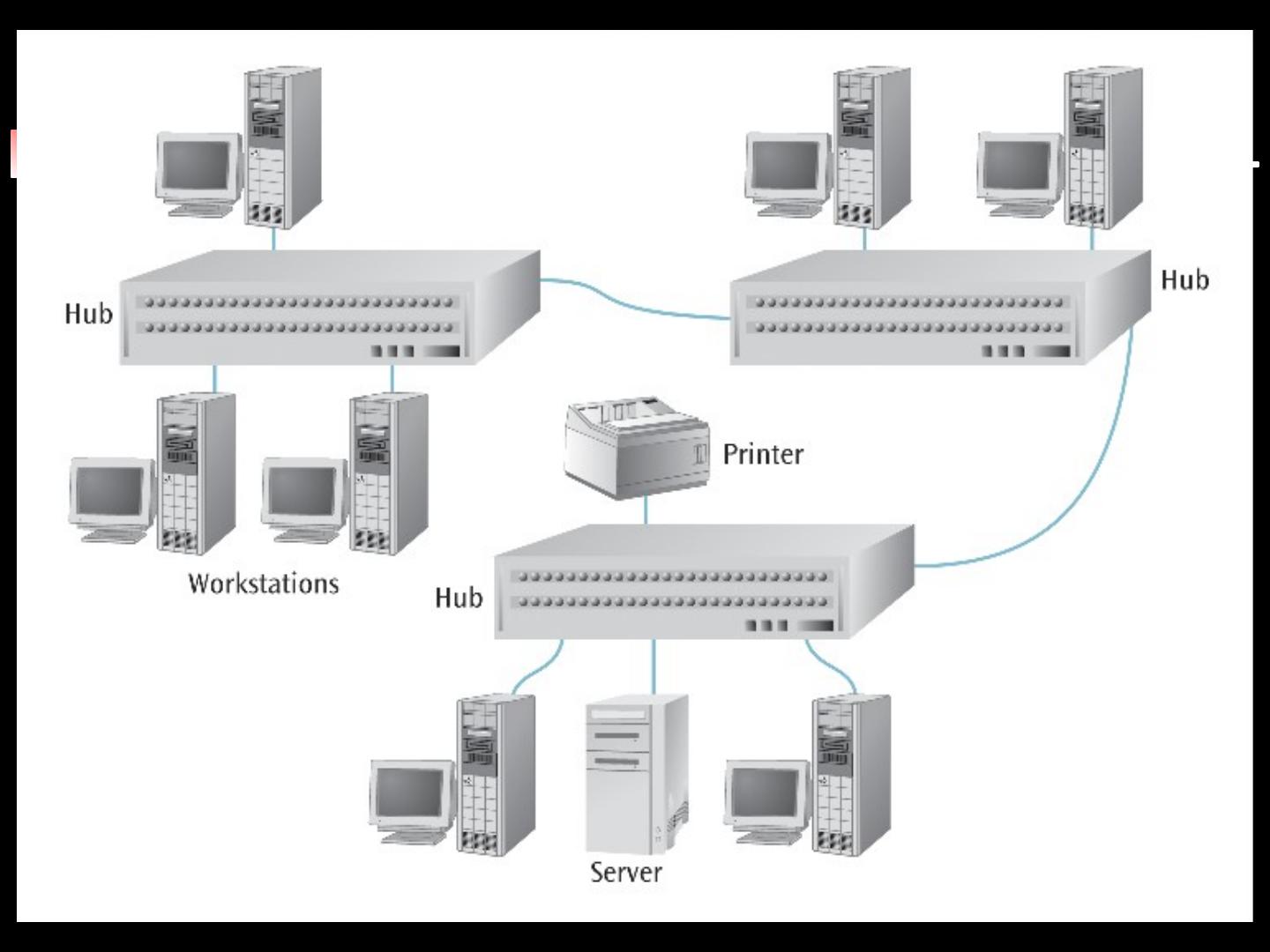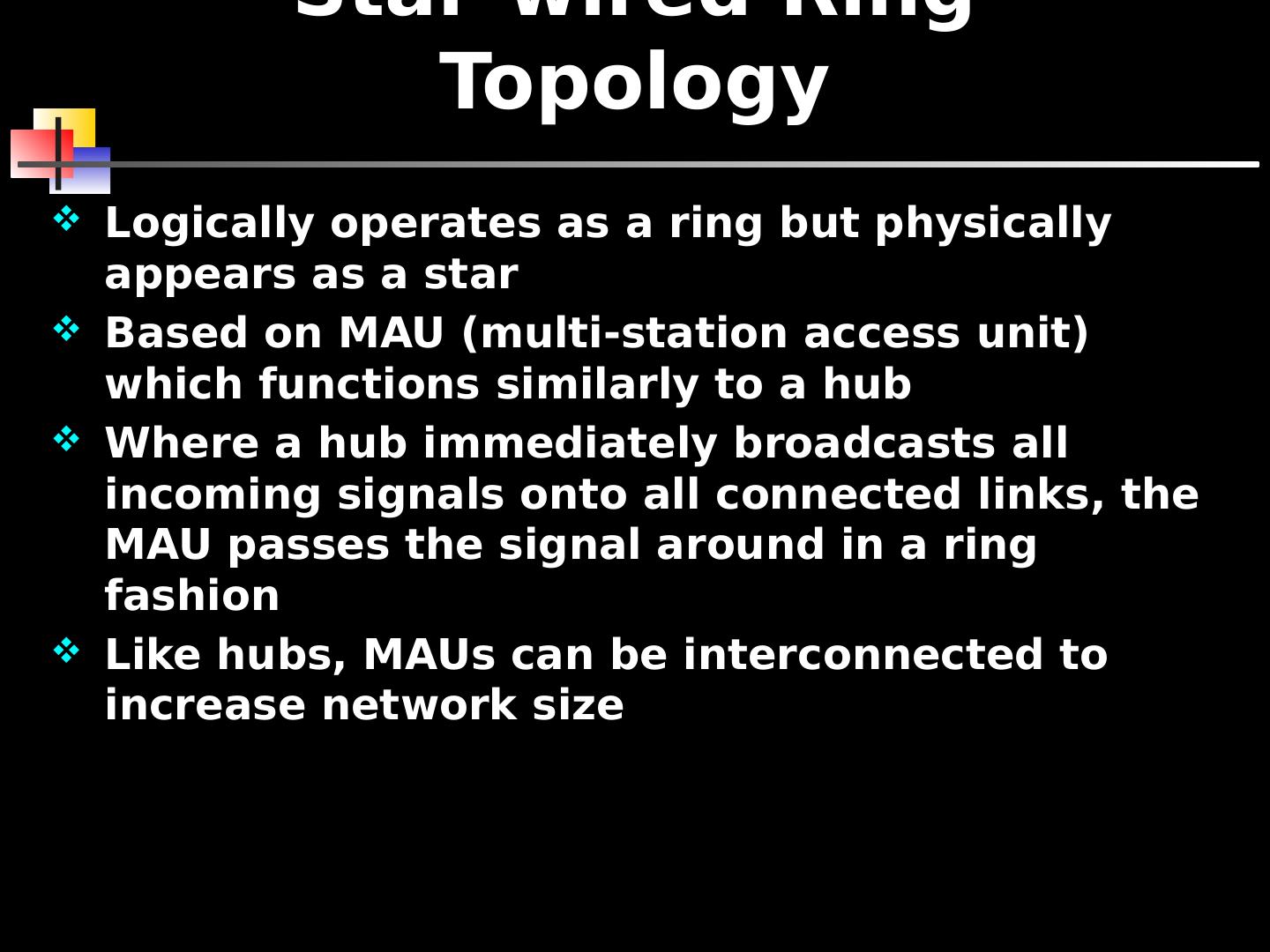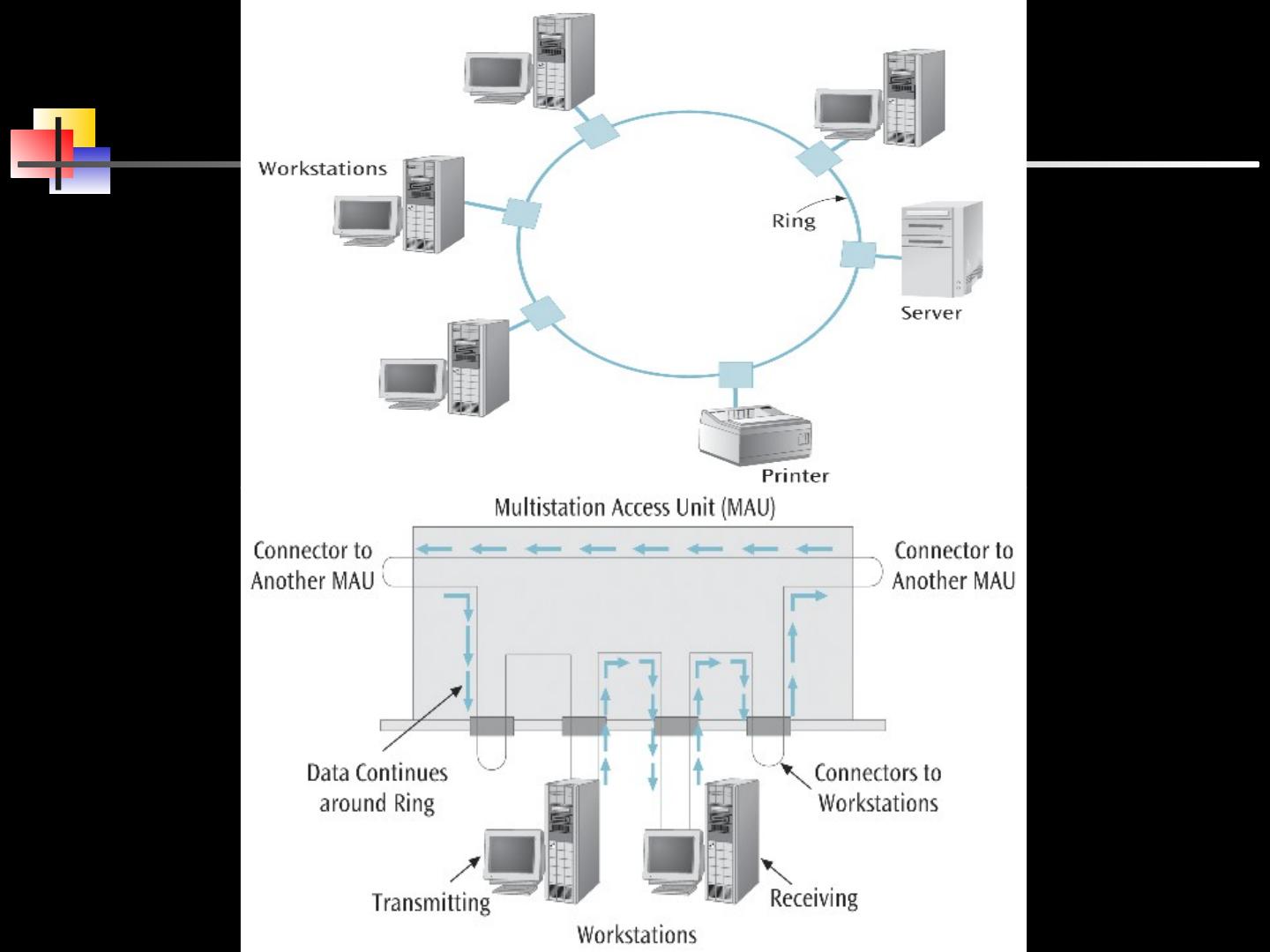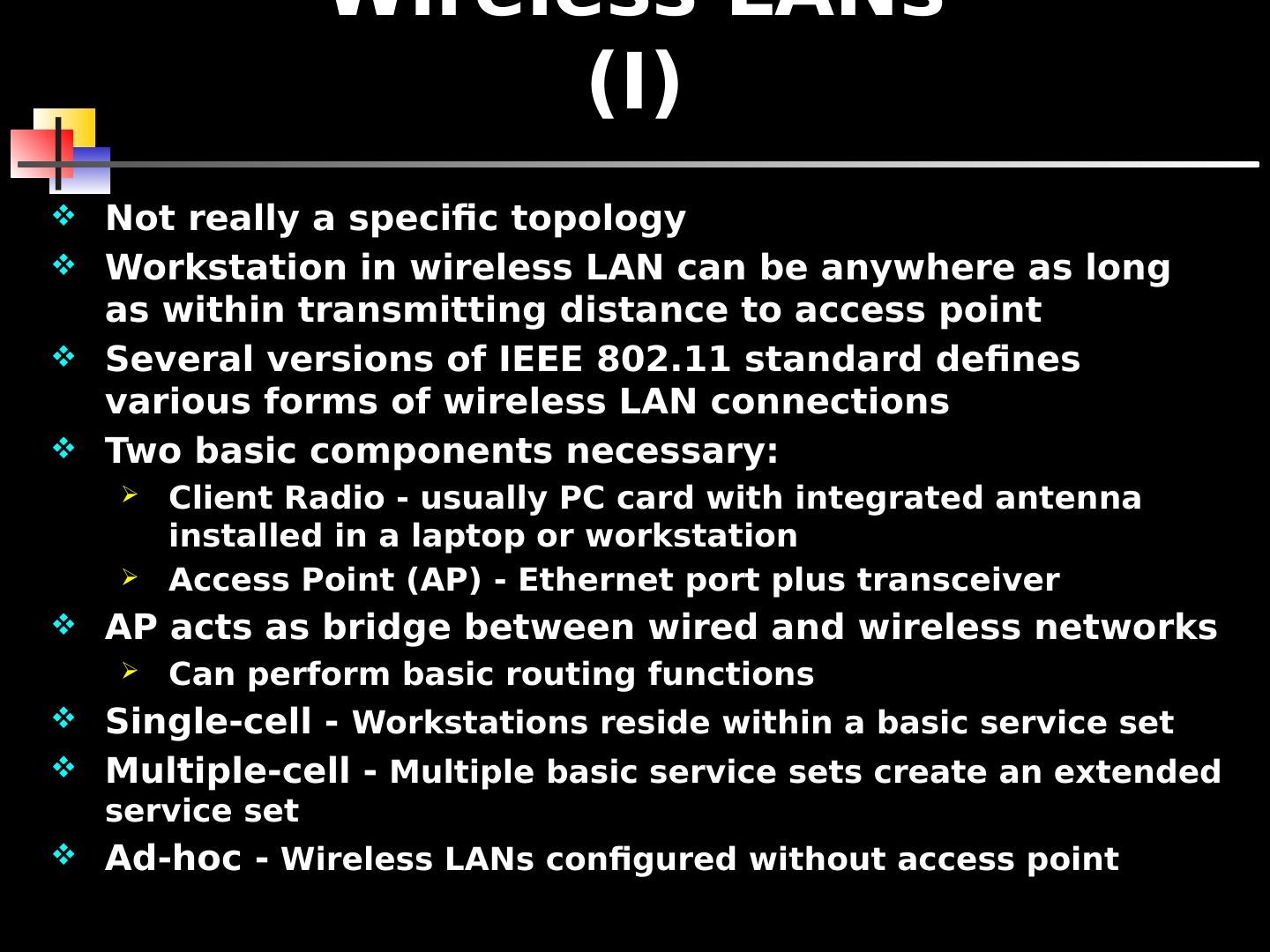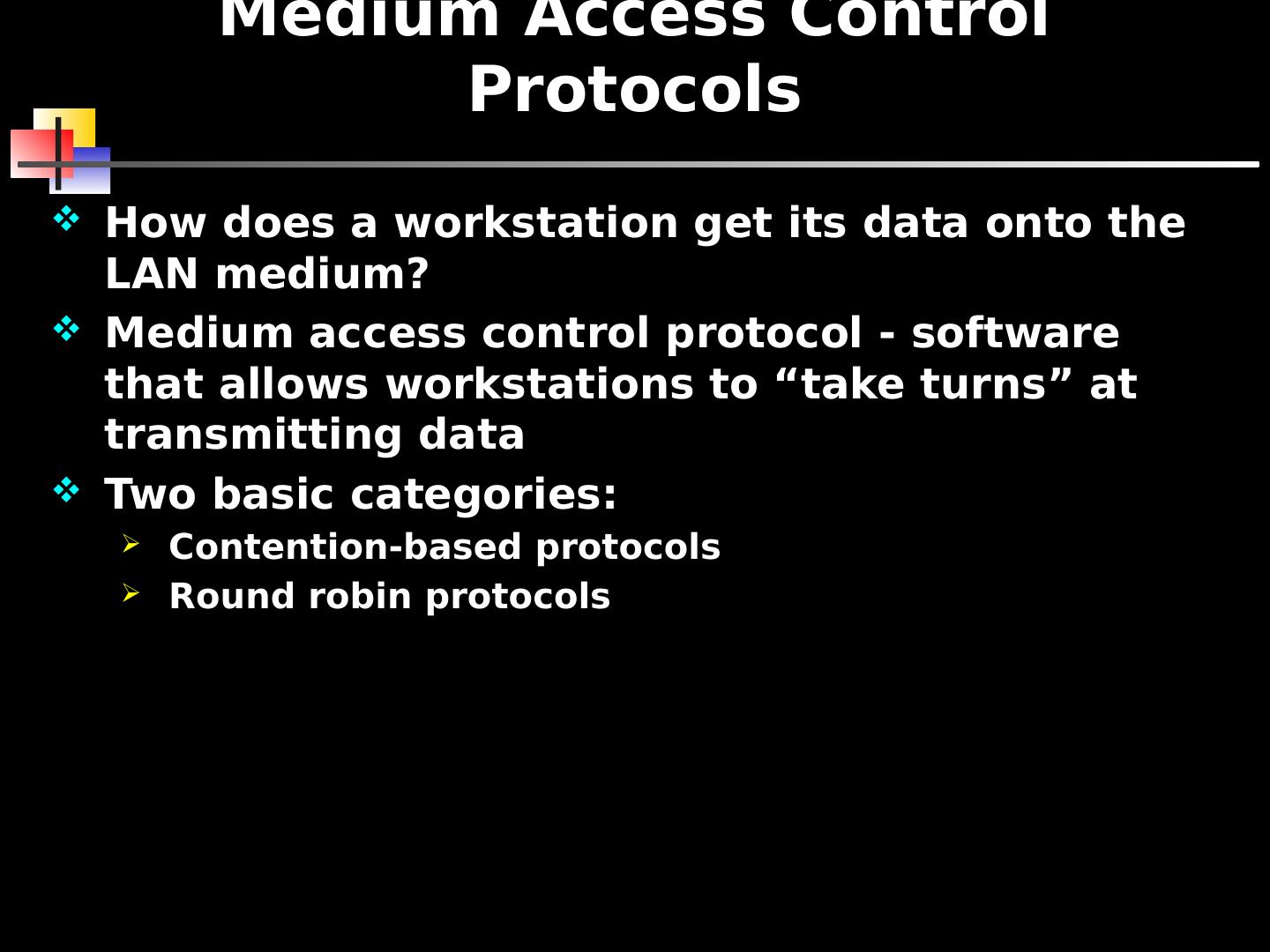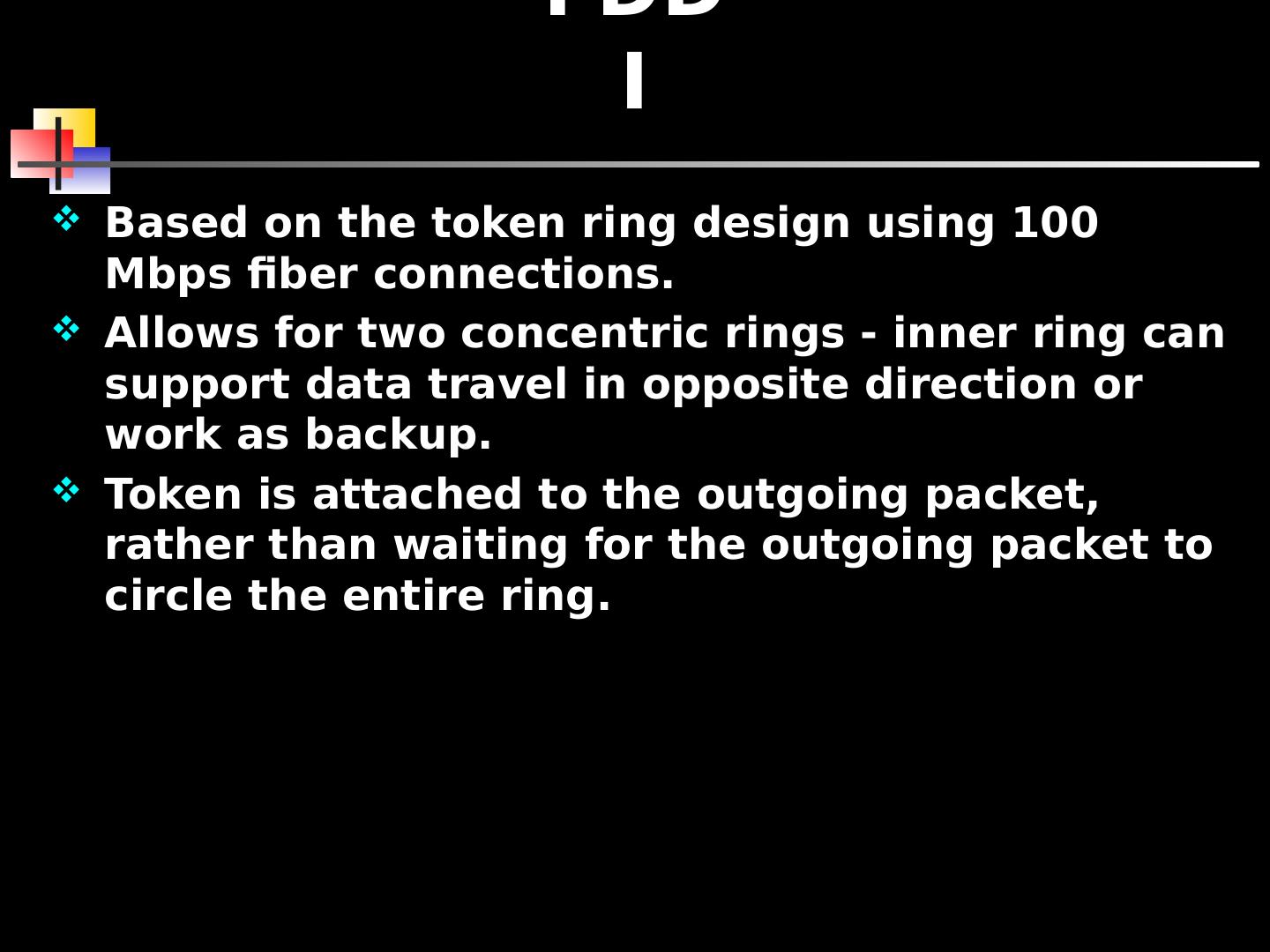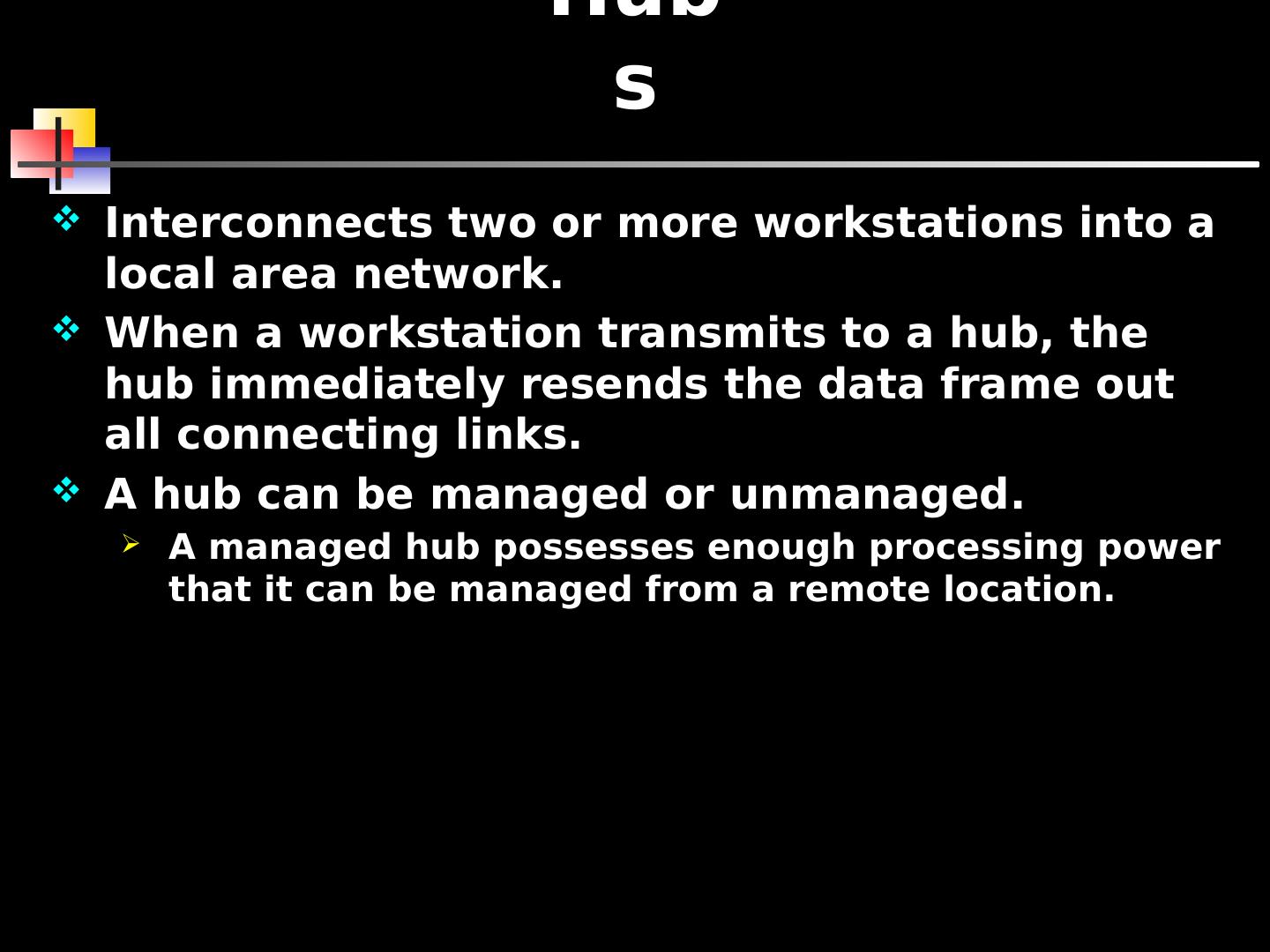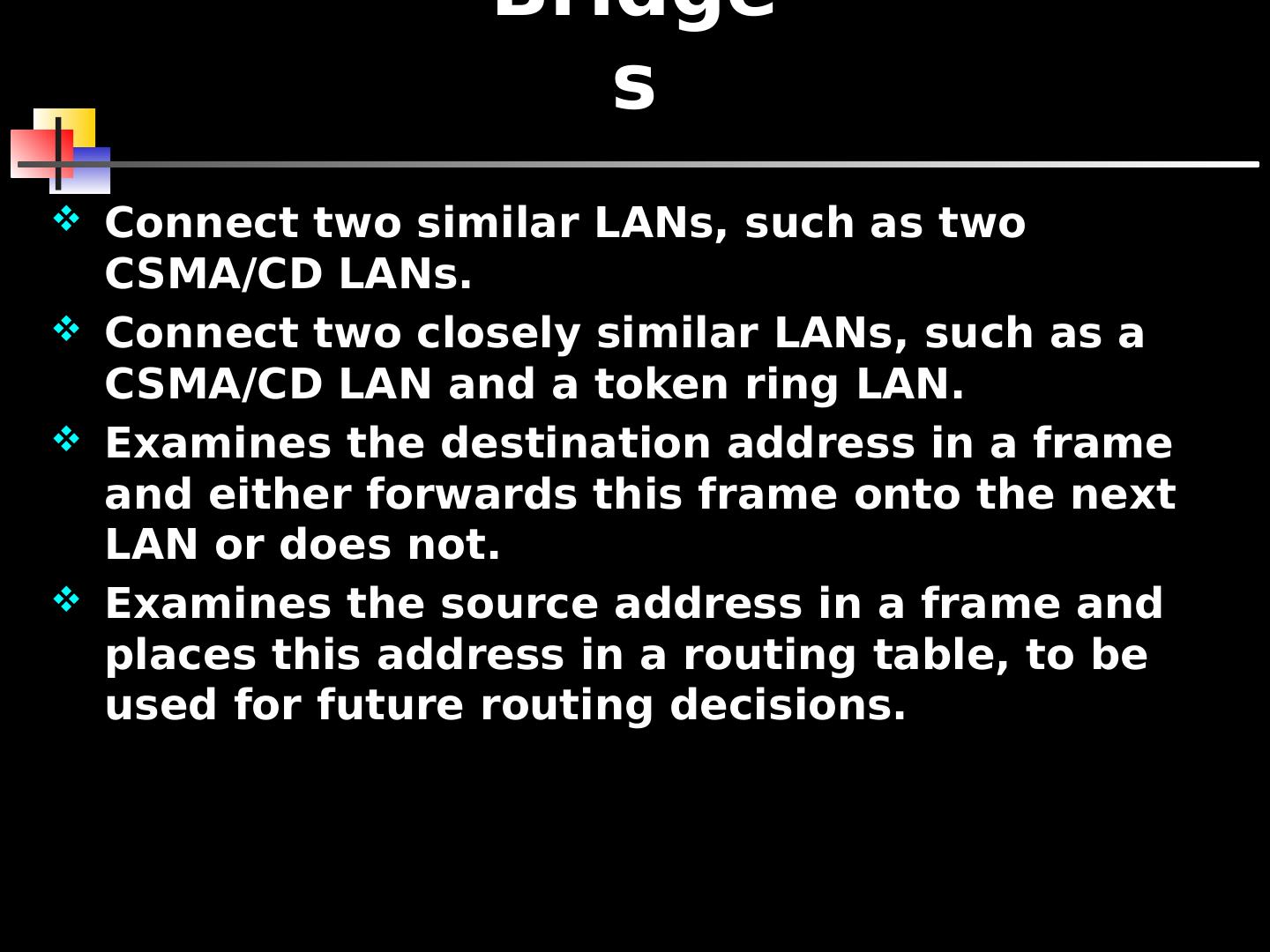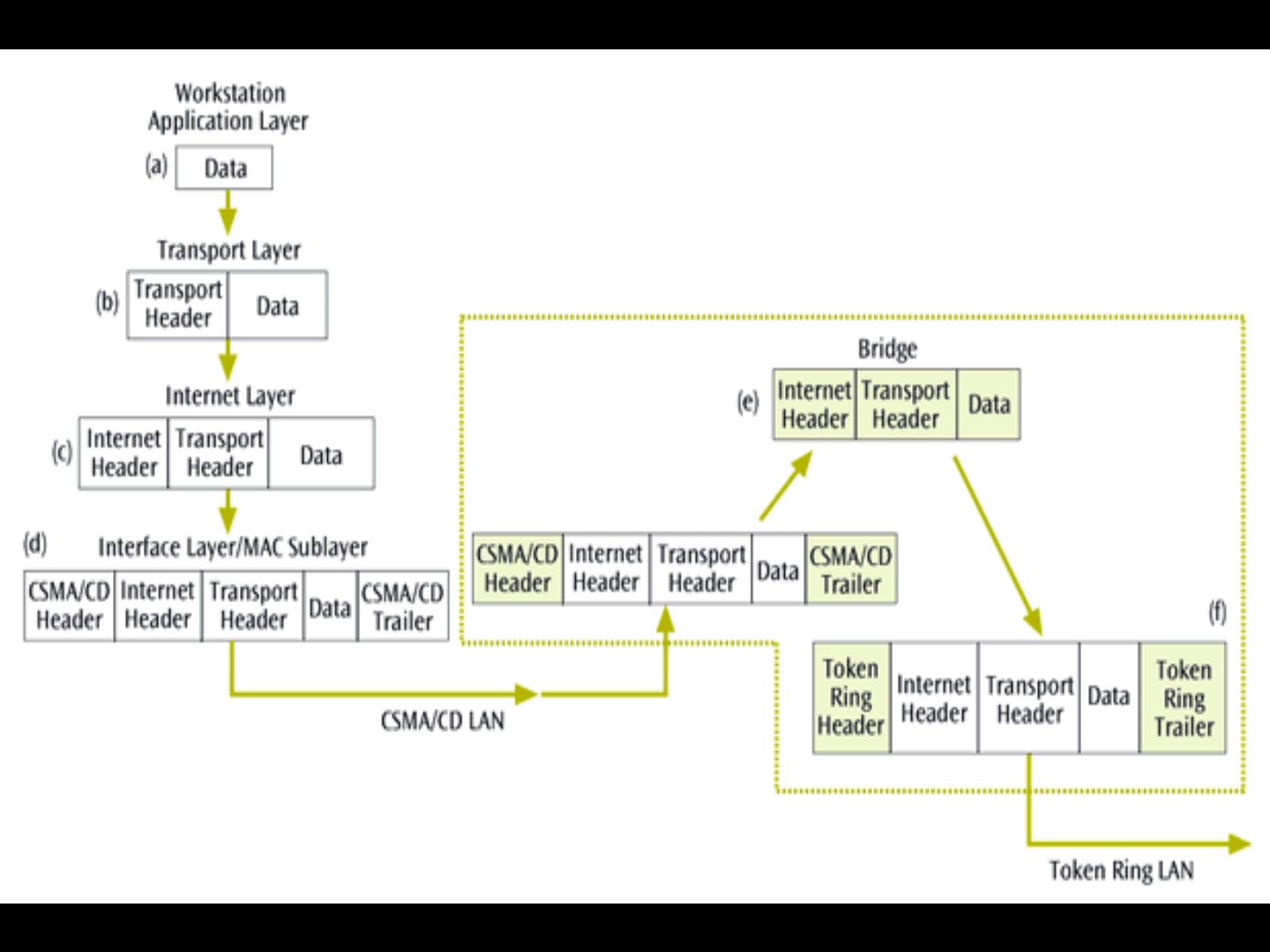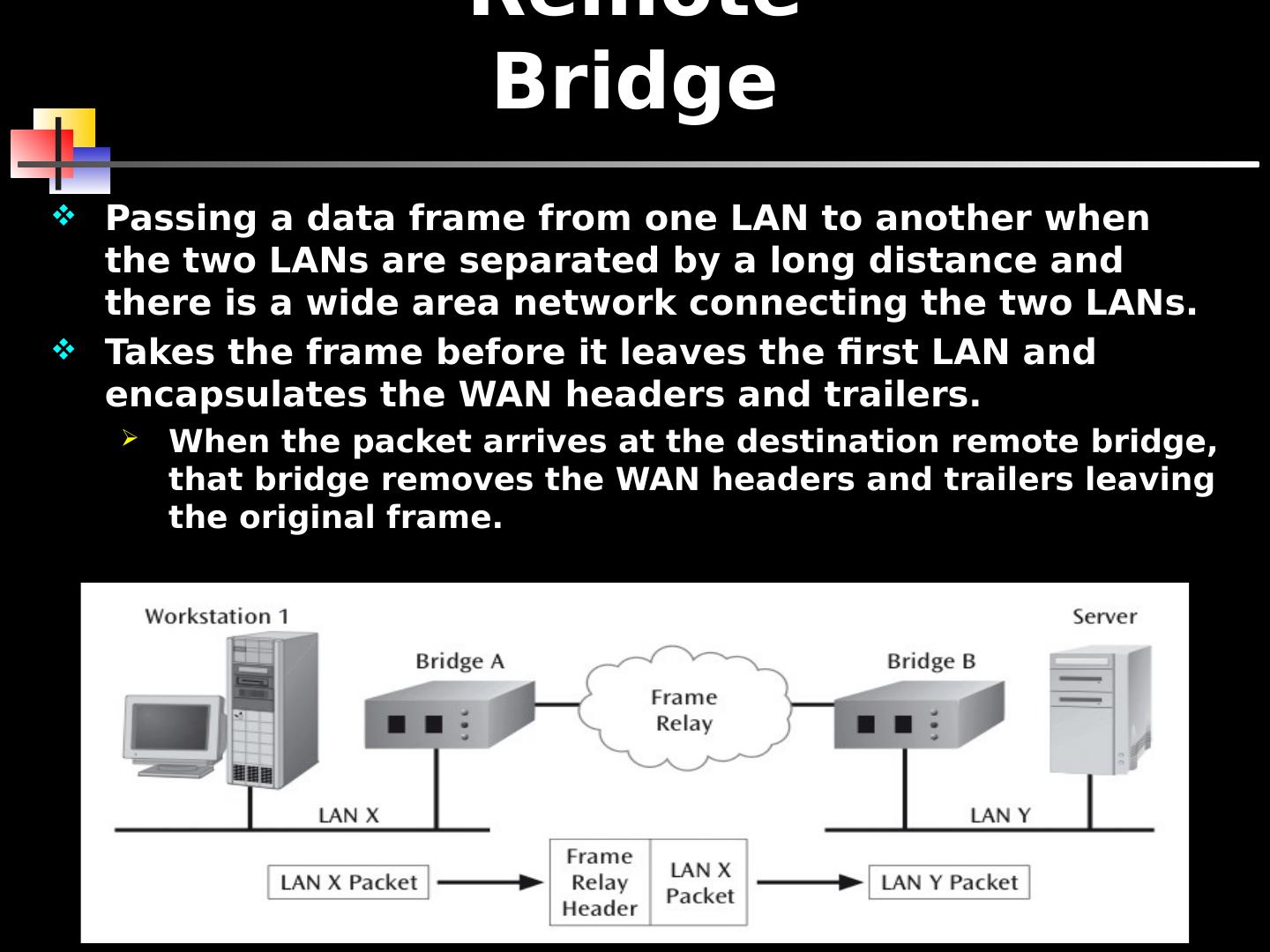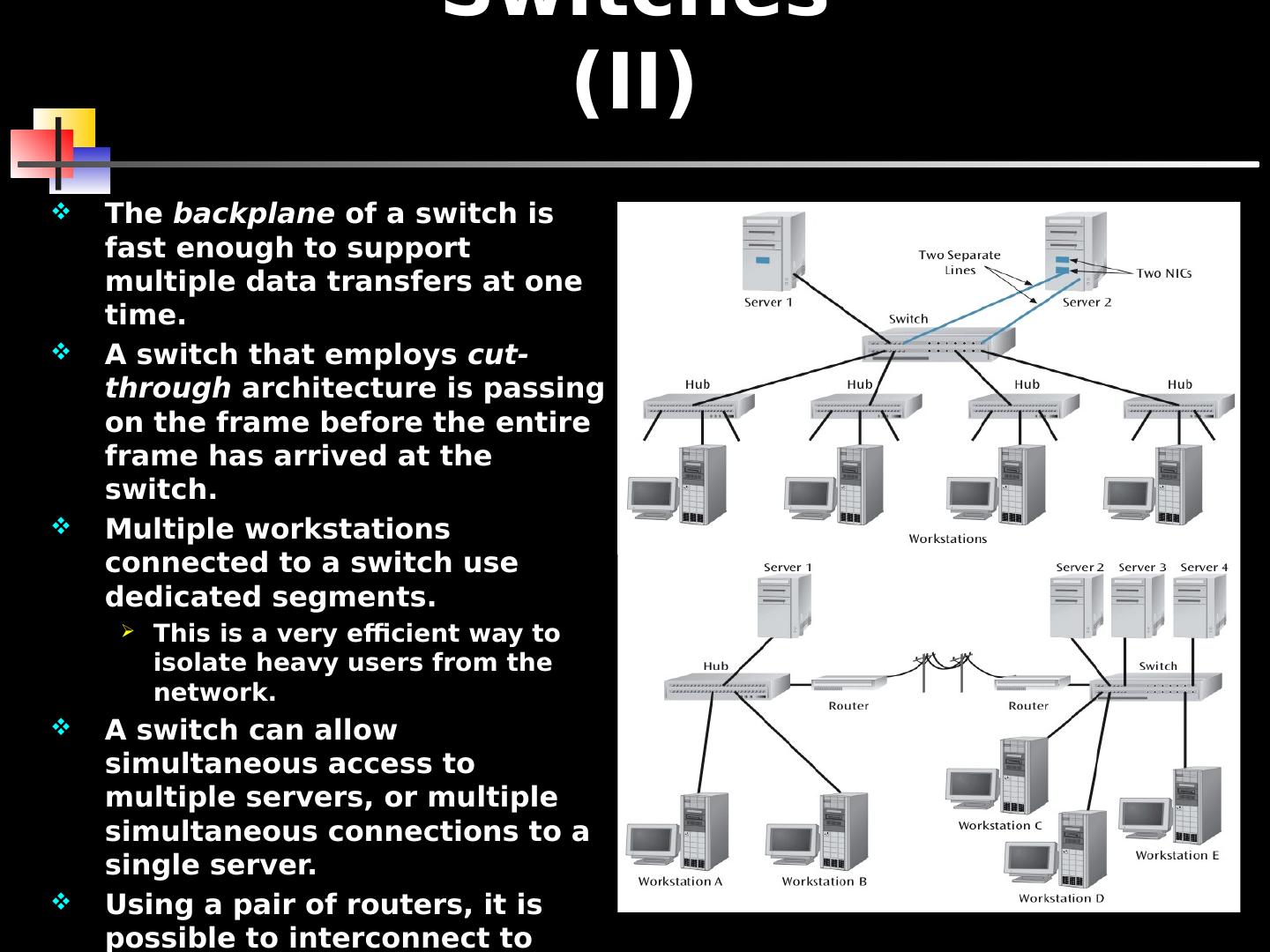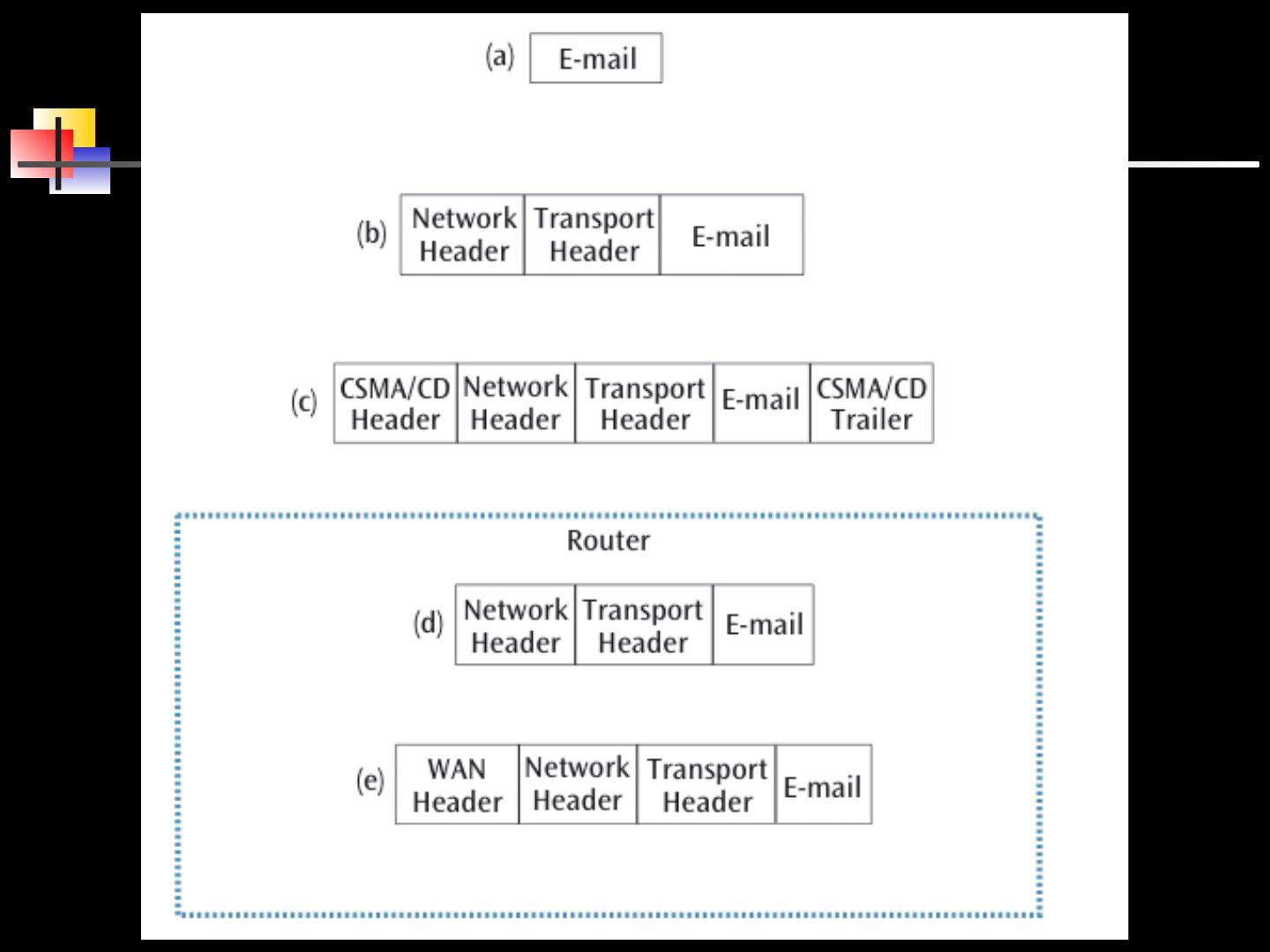- 快召唤伙伴们来围观吧
- 微博 QQ QQ空间 贴吧
- 文档嵌入链接
- <iframe src="https://www.slidestalk.com/u181/Data_Communications_Chapter7?embed" frame border="0" width="640" height="360" scrolling="no" allowfullscreen="true">复制
- 微信扫一扫分享
数据通信:LAN
展开查看详情
1 .Chapter 7 Local Area Networks: The Basics
2 .Primary Function of a LAN File serving – large storage disk drive acts as a central storage repository Print serving – Providing authorization to access a particular printer, accept and queue print jobs, and user access to print queue to perform administrative duties Video transfers – High speed LANs are capable of supporting video image and live video transfers Manufacturing support – LANs can support manufacturing and industrial environments Academic support – In classrooms, labs, and wireless E-mail support Interconnection between multiple systems
3 .Advantages of LAN Ability to share hardware and software resources Individual workstation might survive network failure Component and system evolution are possible Support for heterogeneous forms of hardware and software Access to other LANs and WANs Private ownership Secure transfers at high speeds with low error rates
4 .Disadvantages of LAN Equipment and support can be costly Level of maintenance continues to grow Private ownership? Some types of hardware may not interoperate Just because a LAN can support two different kinds of packages does not mean their data can interchange easily A LAN is only as strong as it weakest link, and there are many links
5 .Basic LAN Topologies Bus/tree Star-wired bus Star-wired ring Wireless
6 .Bus/Tree Topology The original topology. Workstation has a network interface card (NIC) that attaches to the bus (a coaxial cable) via a tap. Data can be transferred using either baseband digital signals or broadband analog signals. Baseband signals are bidirectional (broadcast) and move outward in both directions from the workstation transmitting. Broadband signals are usually uni-directional and transmit in only one direction. Because of this, special wiring considerations are necessary. Buses can be split and joined, creating trees.
7 .Baseband Broadband 7
8 .Star-wired Bus Topology Logically operates as a bus, but physically looks like a star Star design is based on hub. All workstations attach to hub Unshielded twisted pair usually used to connect workstation to hub Hub takes incoming signal and immediately broadcasts it out all connected links Hubs can be interconnected to extend network size Modular connectors and twisted pair make installation and maintenance of star-wired bus better than standard bus Hubs can be interconnected with twisted pair, coaxial cable, or fiber optic cable Biggest disadvantage: when one station talks, everyone hears it. This is called a shared network. All devices are sharing the network medium
9 .9
10 .Star-wired Ring Topology Logically operates as a ring but physically appears as a star Based on MAU (multi-station access unit) which functions similarly to a hub Where a hub immediately broadcasts all incoming signals onto all connected links, the MAU passes the signal around in a ring fashion Like hubs, MAUs can be interconnected to increase network size
11 .11
12 .Wireless LANs (I) Not really a specific topology Workstation in wireless LAN can be anywhere as long as within transmitting distance to access point Several versions of IEEE 802.11 standard defines various forms of wireless LAN connections Two basic components necessary: Client Radio - usually PC card with integrated antenna installed in a laptop or workstation Access Point (AP) - Ethernet port plus transceiver AP acts as bridge between wired and wireless networks Can perform basic routing functions Single-cell - Workstations reside within a basic service set Multiple-cell - Multiple basic service sets create an extended service set Ad-hoc - Wireless LANs configured without access point
13 .13
14 .Wireless LANs (II) IEEE 802.11 – The original wireless standard, transmitting data at 2 Mbps IEEE 802.11b – The second wireless standard, transmitting data at 11 Mbps IEEE 802.11a – One of the more recent standards, transmitting data at 54 Mbps using 5 GHz frequency range IEEE 802.11g – The other recent standard, also transmitting data at 54 Mbps but using the same frequencies as 802.11b (2.4 GHz) Backwards compatible with 802.11b IEEE 802.11n (100 Mbps) is last standard that has been widely implemented. Available at both 2.4 & 5 GHz Latest wireless Ethernet is using MIMO technology (multiple input multiple output) Sender and receiver have multiple antennas for optimum reception IEEE 802.11ac is the latest standard that is gaining momentum Operates only on 5 GHz band with data rate up to 6.9 Gbps
15 .15
16 .Medium Access Control Protocols How does a workstation get its data onto the LAN medium? Medium access control protocol - software that allows workstations to “take turns” at transmitting data Two basic categories: Contention-based protocols Round robin protocols
17 .Contention-Based Protocols (I) Essentially first come first served Most common example: Carrier sense multiple access with collision detection (CSMA/CD) If no one is transmitting, a workstation can transmit If someone else is transmitting, workstation “backs off” and waits If two workstations transmit at same time, collision occurs When two workstations hear collision, they stop transmitting immediately Each workstation backs off a random amount of time and tries again Hopefully, both workstations do not try again at exact same time CSMA/CD is an example of a nondeterministic protocol
18 .18
19 .Contention-Based Protocols (II) Wireless CSMA/CA (Collision avoidance) Protocol does not listen and detect collisions Instead, tries to avoid collisions before they happen How does CSMA/CA do this? All devices, before they transmit, must wait an amount of time called an interframe space (IFS) Some applications have a short IFS, while others have a long IFS If two applications want to transmit at same time, the application with shorter IFS will go first. If medium is idle after IFS, a random backoff counter is selected and transmission starts after the countdown.
20 .Round Robin Protocols Each workstation takes turn transmitting: turn is passed around the network from workstation to workstation Most common example is token ring LAN in which a software token is passed from workstation to workstation Token ring is an example of a deterministic protocol Token ring more complex than CSMA/CD What happens if token is lost? Duplicated? Hogged? Token ring LANs are losing the battle with CSMA/CD LANs
21 .21
22 .IEEE 802 To better support local area networks, data link layer of the OSI model was broken into two sublayers: Logical link control sublayer Medium access control sublayer Medium access control sublayer defines the frame layout More closely tied to specific medium at physical layer Thus, when people refer to LANs they often refer to its MAC sublayer name, such as 10BaseT
23 .IEEE 802 Frame Formats IEEE 802 suite of protocols defines frame formats for CSMA/CD (IEEE 802.3), CSMA/CA (IEEE 802.11), and token ring (IEEE 802.5) Each frame format describes how data package is formed If a CSMA/CD network connects to a token ring network, frames have to be converted from one to another
24 .Frame Formats IEEE 802.5 Token Ring IEEE 802.11 CSMA/CA IEEE 802.3 CSMA/CD
25 .LAN Systems Ethernet or CSMA/CD IBM Token Ring FDDI (Fiber Distributed Data Interface)
26 .Ethernet Originally, CSMA/CD was 10 Mbps. Then 100 Mbps was introduced. Most NICs sold today are 10/100 Mbps. Then 1000 Mbps (1 Gbps ) was introduced. Transmission is full duplex (separate transmit and receive), thus no collisions. Prioritization is possible using 802.1p protocol. Topology can be star or mesh (for trunks). Cabling can be either UTP or optical. Where 10 Mbps Ethernet has less than 30% utilization due to collisions, 1000 Mbps is limited only by traffic queuing. Distance with 10 Mbps is limited by CSMA/CD propagation time, whereas 1000 Mbps is limited only by media. 10 Gbps is now beginning to appear.
27 .27
28 .Power & Ethernet What if you have a remote device that has an Ethernet connection? It will require a power connection What if you don’t have an electrical outlet nearby? Use PoE Power to drive Ethernet NIC is sent over wiring along with usual Ethernet signals Ethernet over power line Uses existing power lines in the building No new wiring needed Slower
29 .IBM Token Ring Deterministic LAN offered at speeds of 4, 16 and 100 Mbps. Very good throughput under heavy loads. More expensive components than CSMA/CD. Losing ground quickly to CSMA/CD. May be extinct soon.




